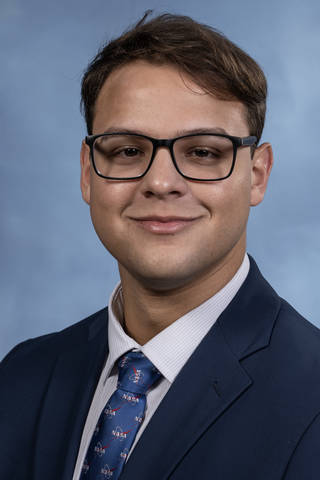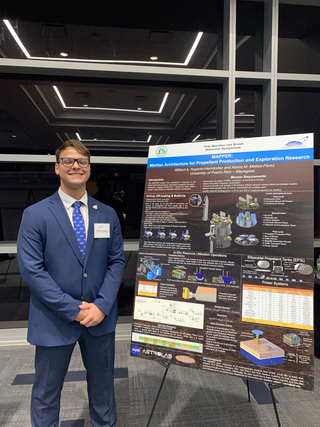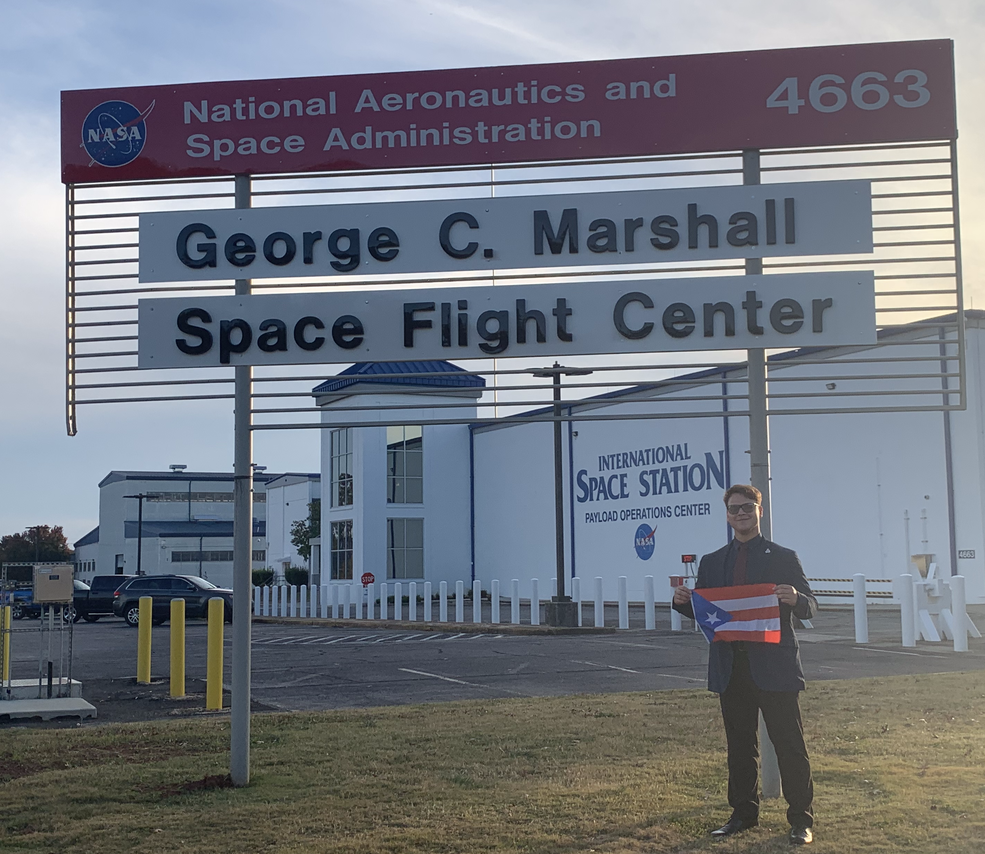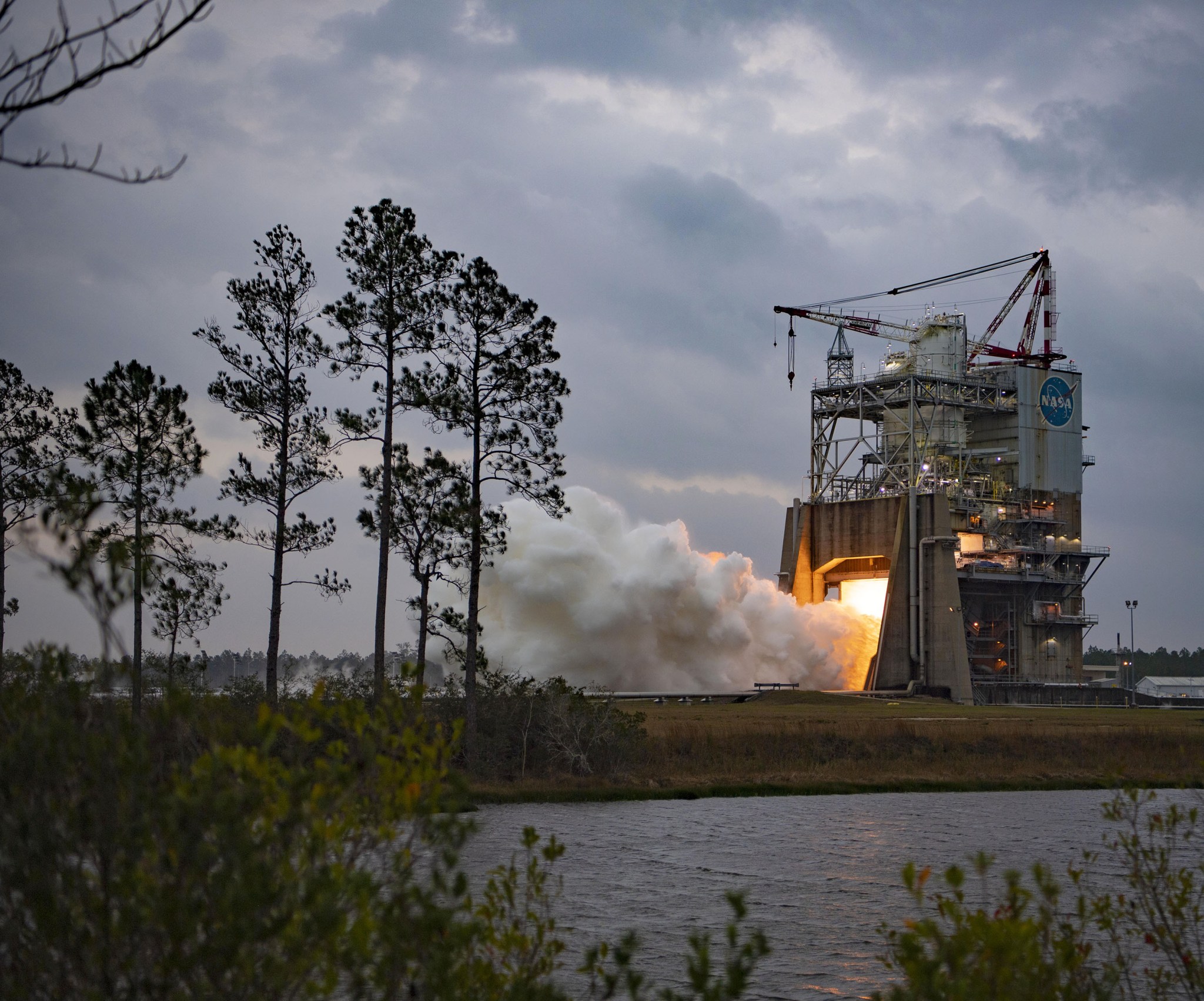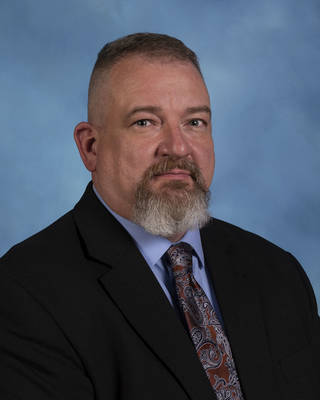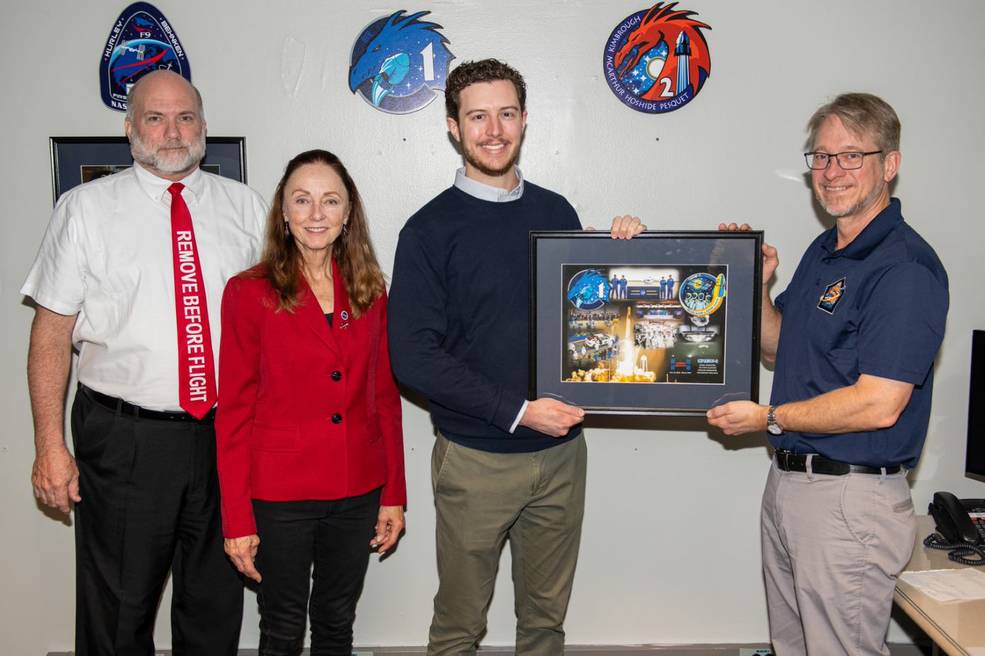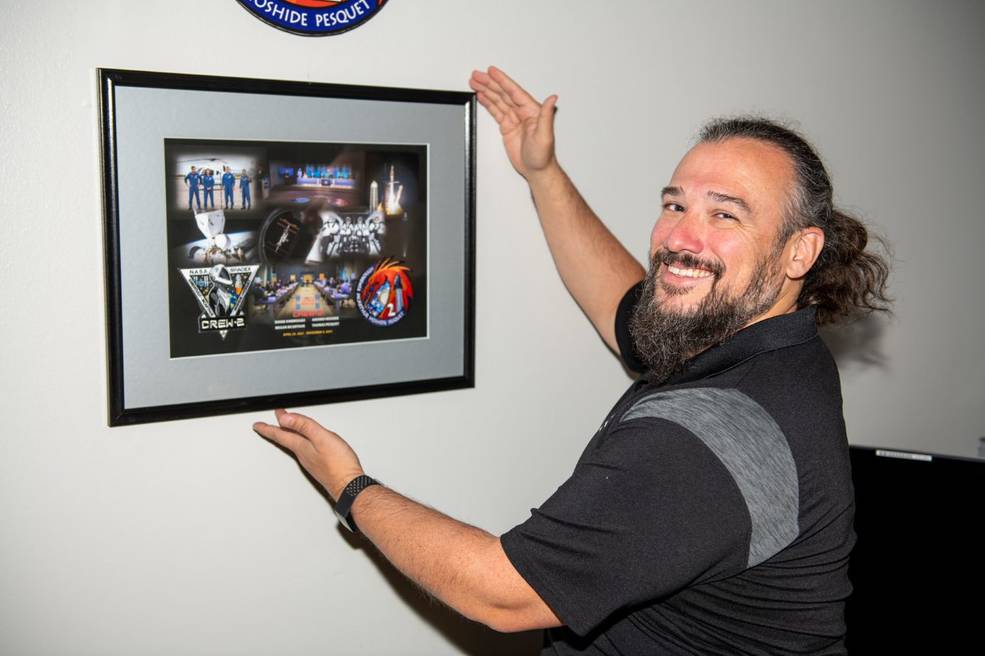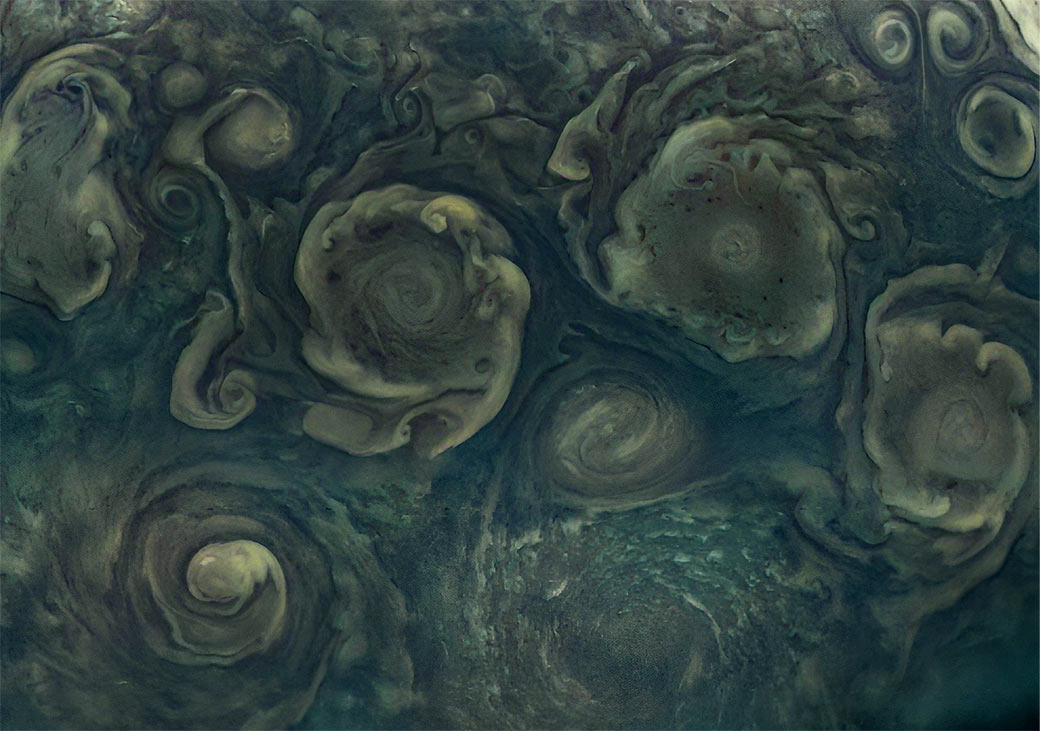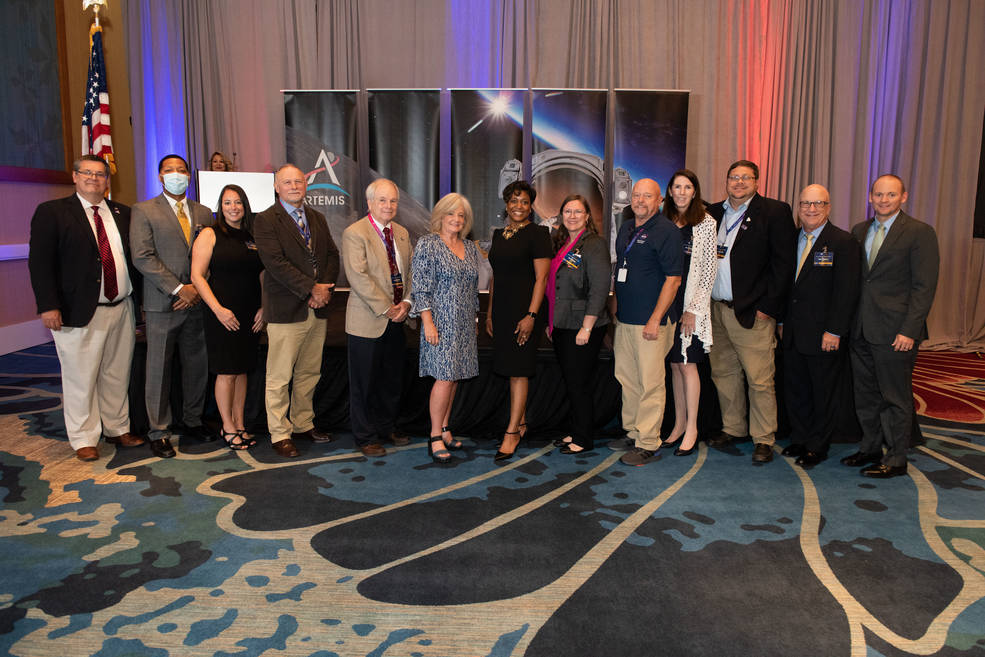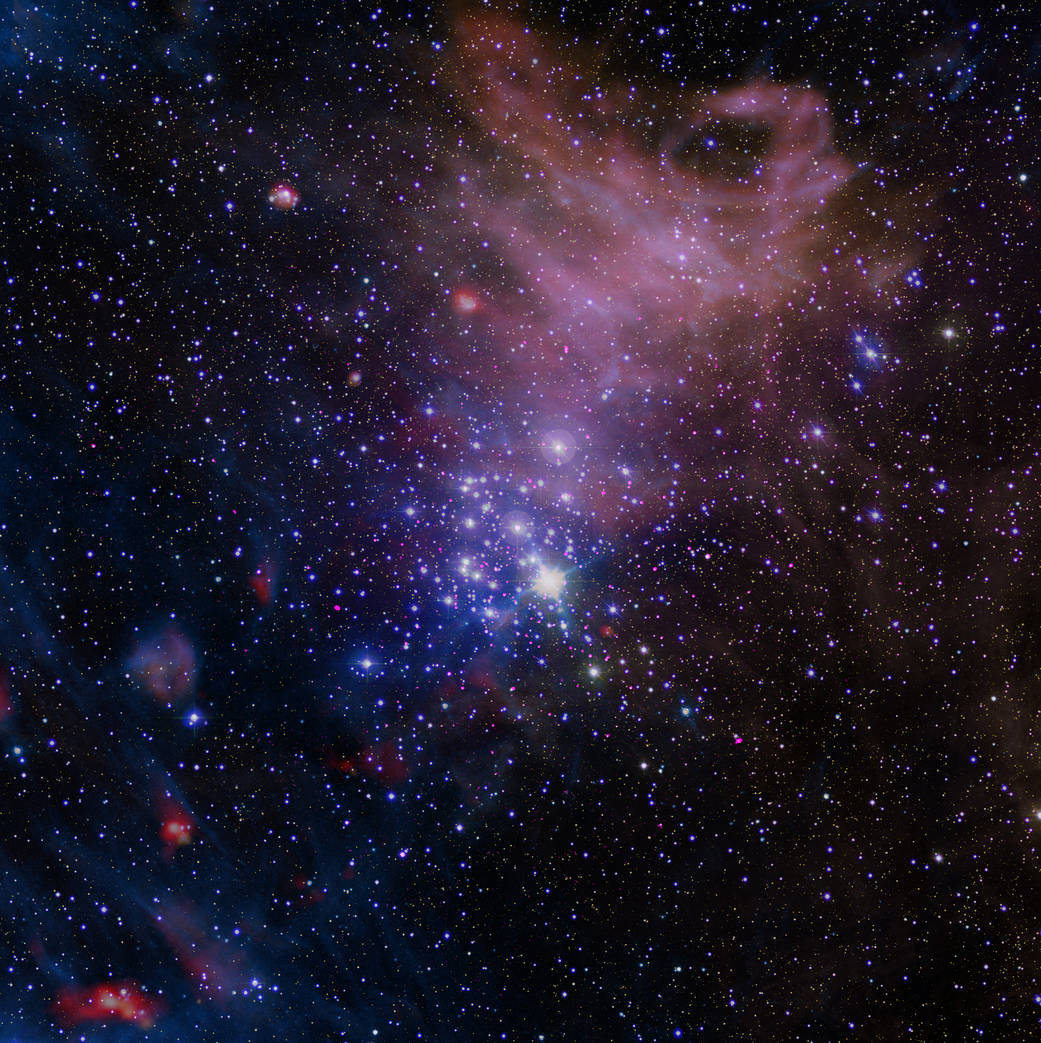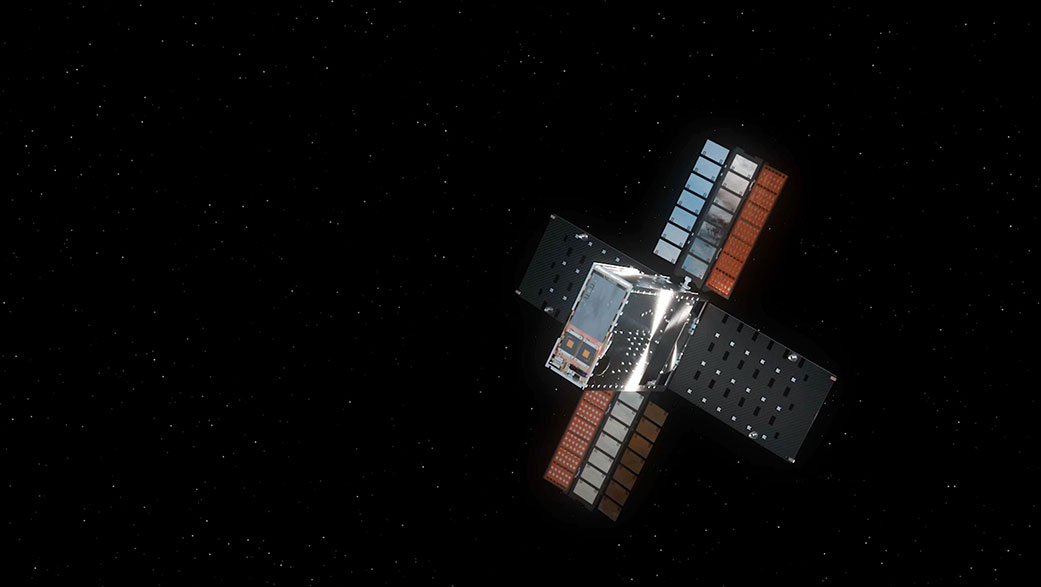The Marshall Star for December 21, 2022.
In This Week’s Star
- Marshall Intern Overcomes Hurricane, Completes NASA Internship
- NASA Conducts First Test of Redesigned Moon Rocket Engine at Stennis
- Take 5 with Jon McAfee
- Marshall Participates in New Tradition for Commercial Crew Program
- 50 States – Landing and Recovery
- Juno Exploring Jovian Moons During Extended Mission
- Research Scientist John Mandel Makes Connections
- Space Flight Awareness Honoree Event Recognizes Marshall Team Members
- Chandra Sees Stellar X-rays Exceeding Safety Limits
- NASA Awards Contract to Maintain Webb Telescope Operations
- Lunar Flashlight Has Launched – Follow the Mission in Real Time
Marshall Intern Overcomes Hurricane, Completes NASA Internship
By Lane Figueroa
Wilbert Ruperto-Hernández, a senior studying mechanical engineering at the University of Puerto Rico-Mayagüez, is known affectionately by his friends and family as “Mr. NASA.” The nickname is warranted as he completes his internship with NASA’s Marshall Space Flight Center.
A Puerto Rican native, Ruperto-Hernández currently supports the Advanced Concepts Office at Marshall where engineers and scientists create blueprints for cutting-edge technologies necessary to execute NASA’s long-term goals. The ACO is the birthplace of many NASA missions – where NASA personnel combine proven engineering practices with ground-breaking ideas to make the “impossible” possible.
The ACO is the perfect place for Ruperto-Hernández, who was captivated by space exploration at the age of 4 after discovering photos of the universe in his grandfather’s encyclopedia. “When I accepted my internship at the ACO, I was thrilled to learn I would support the first human missions to Mars,” Ruperto-Hernández said.
Enthusiasm aside, Ruperto-Hernández faced an immediate challenge – the learning curve associated with using the Dynamic Rocket Equation Tool (DYREQT) – an advanced programming tool developed by the ACO team in the Python programming language and used to digitally illustrate and assess mission-scenarios.
“None of my previous experiences included an opportunity to improve a fundamental skill I was missing – which was programming,” Ruperto-Hernández said. “My college education and extracurricular activities didn’t include programming, and I quickly realized I needed to learn how to code.”
However, programming wasn’t the only obstacle to overcome. On Sept. 18, 2022, Hurricane Fiona slammed Puerto Rico, causing mass destruction that left thousands of residents without power and water for weeks, including Ruperto-Hernández’s parents. To complicate the situation, the island was still recovering from Hurricane Maria, which only worsened the impacts of Fiona.
Despite the hurricane, Ruperto-Hernández stayed determined to complete his virtual internship. Before the storm made landfall, he alerted his mentors and took preemptive measures to keep working such as downloading necessary documents, submitting work early, and charging electronic devices.
When his family lost power and internet, he would use his car to charge devices while driving around town searching for locations with power and Wi-Fi – his workplace often became a friend’s home or local business. His passion for space exploration and dream of becoming an astronaut prevailed over the natural disaster’s destruction.
Ruperto-Hernández was accustomed to fast-paced work environments and often put pressure on himself to perform quickly regardless of circumstances, but the challenges of learning programming and overcoming a hurricane taught him a valuable lesson:Life is a marathon, not a sprint.
“I was reluctant to accept this was out of my control and maybe I should take my time to work through the issue and the learning curve,” Ruperto-Hernández said. “One important lesson from this experience was learning to change pace and be patient with myself.”
He credits his mentors, Robert Hetterich and Stephen Edwards, for setting realistic expectations, showing empathy, and encouraging him to take time learning the complex software. Hetterich and Edwards made it clear they did not expect Ruperto-Hernández to “make up for lost time.”
Ruperto-Hernández’s resilience paid off when his programming skills significantly improved, helping identify coding issues which could ultimately improve the experience of future DYREQT users.
In addition to finding virtual success this semester, Ruperto-Hernández was invited to present a poster from his NASA RASC-AL team at the annual Von Braun Symposium in Huntsville on Oct. 27, 2022 – just over a month after Hurricane Fiona.
While in Huntsville for the symposium, he toured Marshall facilities and met several team members in person. “While virtual internships teach valuable lessons on time management and flexibility, in-person opportunities help students visualize their contributions to the agency,” Ruperto-Hernández said.
Even after all the hardships, Ruperto-Hernández successfully completed all projects for his Marshall internship.
These challenges have strengthened his passion for space exploration and his goal to become an astronaut. He believes exploring the universe can unite the world for a common cause and advance technologies to improve life on Earth. He also deeply values exposing more minority groups to space and making space topics more digestible for all ages and backgrounds.
As the end of Ruperto-Hernández’s collegiate career comes closer, he describes his experiences at Marshall as “the perfect way” to end his internship and propel him into full-time professional life.
Figueroa, a Media Fusion employee, supports Marshall’s Office of Strategic Analysis & Communications.
NASA Conducts First Test of Redesigned Moon Rocket Engine at Stennis
NASA conducted the first test of the newly redesigned RS-25 engine for future flights of the Space Launch System (SLS) rocket Dec. 14, completing 209.5 seconds of a scheduled 500 second hot fire at the agency’s Stennis Space Center.
The hot fire test was shut down early by a non-flight system used to monitor the engine. NASA and Space Launch System lead engine contractor Aerojet Rocketdyne are analyzing data to review the monitoring system, evaluate engine performance, and identify the reason for the early test cutoff. Because the test was being done for redesigned engines in support of Artemis V and beyond, no impacts to RS-25 hardware for earlier missions is expected.
“Much like launch, test campaigns are dynamic events that allow us to learn more about the SLS rocket hardware,” said Johnny Heflin, liquid engines manager for the Space Launch System at NASA’s Marshall Space Flight Center. “NASA and Aerojet Rocketdyne teams were successful in running the first test of the new RS-25 restart engine for 209.5 seconds that will help power future missions with the SLS rocket. Preliminary data indicates the engine was performing nominally. Data analysis is underway.”
The SLS Program is managed by Marshall.
The single-engine hot fire, known as a confidence test, was designed to confirm all is ready to proceed with a series of certification tests early next year on a full RS-25 certification engine. NASA and the company modified 16 of the engines remaining after the Space Shuttle Program for use on Artemis mission I through IV. The upcoming series of testing is for the RS-25 engines that will be used beginning with Artemis V.
“Each test, even one that does not go full duration, helps us gather valuable data and helps us prepare to fly safely,” said Chip Ellis, Stennis RS-25 project manager.
The test on the Fred Haise Test Stand at Stennis came just days after NASA successfully completed the Artemis I flight test in preparation for future missions to the Moon.
The test provided initial data to aid NASA and Aerojet Rocketdyne as the company prepares to begin production of new RS-25 engines to power future Artemis missions to the Moon and beyond. For each SLS flight, four RS-25 engines, along with a pair of solid rocket boosters and core stage, help power the rocket at liftoff.
The hot fire was testing new RS-25 components to be used in production of future engines, including a new powerhead component. Additional components, including a new nozzle and controller, will be installed on the engine prior to the start of the certification series.
The hot fire marked the first test on the Fred Haise Test Stand since March when NASA completed developmental testing for Aerojet Rocketdyne efforts to modernize manufacturing processes and reduce production costs of future engines. Since that time, Stennis teams have completed critical test stand maintenance projects to support the RS-25 testing program. These included work to upgrade the stand’s high-pressure industrial water system, flame deflector, thrust vector control system, and data acquisition system.
Four RS-25 engines help power each SLS flight, firing simultaneously to generate a combined 1.6 million pounds of thrust at launch and 2 million pounds of thrust during ascent. Every RS-25 engine that will help power SLS will be tested at Stennis. RS-25 tests at the site are conducted by a combined team of NASA, Aerojet Rocketdyne and Syncom Space Services operators. Syncom Space Services is the prime contractor for Stennis facilities and operations.
Through Artemis missions, NASA will land the first woman and the first person of color on the surface of the Moon, paving the way for a long-term lunar presence and serving as a steppingstone on the way to Mars.
Take 5 with Jon McAfee
By Daniel Boyette
Jon McAfee is an accomplished IT professional, a military veteran, a teacher, and director of NASA’s Network and Telecommunications Services. During the COVID-19 pandemic, he added a new item to his resume: tree farmer.
“Like many people, I was looking for something during the pandemic that would allow me to get out of the house more,” said McAfee, who is based at NASA’s Marshall Space Flight Center.
So, he and his wife found a farm near Hamilton, Alabama, that they purchased primarily as a place for McAfee and his sons to go hunting.
“During the course of the purchase, we were told that 35 of the acres had been professionally planted by a timber company and we could cut it every 10 years for pulp or 15 years for timber and the company would replant it after each cutting,” McAfee said. “So, we entered the exciting world of tree farming.”
Question: What are your primary responsibilities as the director of Network and Telecommunications Services (NaTS)?
McAfee: I have the privilege to lead the team that provides NASA’s enterprise network services, to include the VPN services and internet connections that we use every day for telework, mission imagery, and mission voice. We provide a wide range of services that include everything from cold storage of historical NASA imagery and video at Johnson Space Center, the Enterprise Network Operations Center that monitors NASA’s backbone networks, local area networks, and external connections from Marshall, to providing worldwide real-time mission-critical networks supporting spacecraft operations through the NASA Ground Communication System at Goddard Space Flight Center. Our team is located at every NASA center and other sites to include Wallops Flight Facility and White Sands Test Facility. All that being said, my primary responsibility is to ensure the NaTS team has the support they need to provide a wide range of network and telecommunications services to NASA and our partners to a standard that befits an agency with the legacy of excellence that NASA has established.
Question: What role does NaTS play in helping NASA accomplish its missions?
McAfee: As the saying goes, “communication is key,” so the Network and Telecommunications Services service line plays a critical role in enabling NASA to perform its missions. We provide these essential capabilities by managing the full range of NASA telecommunications and network services, including the connection and protection of all network infrastructure, mission imagery, and mission voice used by the agency. Because our scope is so large, we offer a wide range of services – all of which are aimed at ensuring the workforce’s communication abilities are operating at the highest standards.
Whether it’s supporting an unexpected and unprecedented need for enhanced telework, images of vehicles on the pad before, during, and after launch, maintaining center-specific local area networks, or managing individual mission communication services, we strive to provide the agency with the ability to securely communicate anywhere, at any time, in the most effective and reliable way possible.
Question: Who or what inspired you to pursue an education/career in IT?
McAfee: Honestly, it was chosen for me. I enlisted in the Air Force after graduating from Decatur High School in Alabama, and I scored highest in electronics on the Armed Services Vocational Aptitude Battery. During basic training I was given a list of jobs to choose from and I chose communications computer systems control, better known widely as tech control. It turned out to be the best decision I made during my military career. There were only 2,000 people in my career field at any given time and we were known as the “Water Walkers.”
Question: You began teaching college classes earlier this year. What has the experience been like?
McAfee: I have only been able to give a few lectures so far and will start teaching in earnest next year. I was an instructor in the Air Force – I taught the craftsman-level networking courses for our career field – and enjoyed that. I am looking forward to ramping up and teaching college courses.
Question: What do you enjoy doing with your time while away from work?
McAfee: I love to read. Growing up, a book was the only thing my dad never refused to buy me, so I took advantage of that. I also try to spend as much time with my family as I can. It is getting harder now as my wife coaches seven high school swim teams and my sons are in college or heavily involved in high school athletics. But we take all of the time we can get to travel, cook, or hunt.
Boyette supports Marshall’s Office of Strategic Analysis & Communications.
Marshall Participates in New Tradition for Commercial Crew Program
By Lance D. Davis
NASA’s Commercial Crew Program launched a new plaque-hanging tradition for commercial crew centers on Dec. 14, recognizing team members from the agency’s Kennedy Space Center, Johnson Space Center, and Marshall Space Flight Center. Team members were nominated by the CCP leadership team and selected by CCP program management to hang Crew-1 and Crew-2 mission plaques for the first time.
Program management selected Reid Ruggles, main propulsion systems engineer at Marshall, to hang the Crew-1 mission plaque, and Adam Butt, lead engineer for CPP Launch Vehicle Falcon 9 at Marshall, to hang the Crew-2 mission plaque. The ceremony took place in Marshall’s Huntsville Operations Support Center in M203.
Ruggles provided high quality technical support to CCP missions in main propulsion systems, and he was instrumental in helping the Human Exploration Development & Operations Office stand up the Huntsville Operations Support Center (HOSC) capability for on-console mission support for CCP launches after the COVID-19 pandemic stopped team members from traveling. Additionally, until he took a detail earlier this year, Ruggles also made sure the HOSC was ready to go before each simulation activity, training activity, static fire, and launch.
As the F9 lead engineer, Butt’s leadership has been instrumental in moving the team through technical issues and engineering readiness assessments for each flight as well as supporting the launch vehicle chief engineer on-console at the HOSC for every F9 flight. His leadership of the engineering team was also crucial for Crew-2, the first time CCP flew crew on a reused F9 booster.
“We were honored to participate in the Commercial Crew Program’s brand new tradition of mission plaque hanging,” said Lisa McCollum, manager of the CCP support team at Marshall. “This was a great opportunity to recognize two of our valued team members for their contributions to these missions.
“Reid and Adam are great examples of the amazing folks that make up our CCP support team at Marshall, and we look forward to continuing this tradition!”
The commercial crew support team at Marshall consists of about 80 people supporting the CCP office, engineering, and mission safety. Marshall provides management support as well as engineering expertise in propulsion valves and pyrotechnics, natural environments, and vehicle structures, among others. The team also monitors launch conditions for CCP missions.
50 States – Landing and Recovery
After traveling beyond the Moon, the Artemis I mission ended with the Orion spacecraft’s splashdown. Here are some companies that assisted NASA with the landing and recovery of Orion. (NASA)
Juno Exploring Jovian Moons During Extended Mission
NASA’s Juno mission was scheduled to obtain images of the Jovian moon Io Dec. 15 as part of its continuing exploration of Jupiter’s inner moons. Now in the second year of its extended mission to investigate the interior of Jupiter, the solar-powered spacecraft performed a close flyby of Ganymede in 2021 and of Europa earlier this year.
“The team is really excited to have Juno’s extended mission include the study of Jupiter’s moons. With each close flyby, we have been able to obtain a wealth of new information,” said Juno Principal Investigator Scott Bolton of the Southwest Research Institute in San Antonio. “Juno sensors are designed to study Jupiter, but we’ve been thrilled at how well they can perform double duty by observing Jupiter’s moons.”
Several papers based on the June 7, 2021, Ganymede flyby were recently published in the Journal of Geophysical Research and Geophysical Research Letters. They include findings on the moon’s interior, surface composition, and ionosphere, along with its interaction with Jupiter’s magnetosphere, from data obtained during the flyby. Preliminary results from Juno’s Sept. 9 flyby of Europa include the first 3D observations of Europa’s ice shell.
During the flybys, Juno’s Microwave Radiometer (MWR) added a third dimension to the mission’s Jovian moon exploration: It provided a groundbreaking look beneath the water-ice crust of Ganymede and Europa to obtain data on its structure, purity, and temperature down to as deep as about 15 miles below the surface.
Visible-light imagery obtained by the spacecraft’s JunoCam, as well as by previous missions to Jupiter, indicates Ganymede’s surface is characterized by a mixture of older dark terrain, younger bright terrain, and bright craters, as well as linear features that are potentially associated with tectonic activity.
“When we combined the MWR data with the surface images, we found the differences between these various terrain types are not just skin deep,” said Bolton. “Young, bright terrain appears colder than dark terrain, with the coldest region sampled being the city-sized impact crater Tros. Initial analysis by the science team suggests Ganymede’s conductive ice shell may have an average thickness of approximately 30 miles or more, with the possibility that the ice may be significantly thicker in certain regions.”
During the spacecraft’s June 2021 close approach to Ganymede, Juno’s Magnetic Field (MAG) and Jovian Auroral Distributions Experiment (JADE) instruments recorded data showing evidence of the breaking and reforming of magnetic field connections between Jupiter and Ganymede. Juno’s ultraviolet spectrograph (UVS) has been observing similar events with the moon’s ultraviolet auroral emissions, organized into two ovals that wrap around Ganymede.
“Nothing is easy – or small – when you have the biggest planet in the solar system as your neighbor,” said Thomas Greathouse, a Juno scientist from SwRI. “This was the first measurement of this complicated interaction at Ganymede. This gives us a very early tantalizing taste of the information we expect to learn from the JUICE” – the ESA (European Space Agency) JUpiter ICy moons Explorer – “and NASA’s Europa Clipper missions.”
Jupiter’s moon Io, the most volcanic place in the solar system, will remain an object of the Juno team’s attention for the next year and a half. Their Dec. 15 exploration of the moon will be the first of nine flybys – two of them from just 930 miles away. Juno scientists will use those flybys to perform the first high-resolution monitoring campaign on the magma-encrusted moon, studying Io’s volcanoes and how volcanic eruptions interact with Jupiter’s powerful magnetosphere and aurora.
NASA’s Jet Propulsion Laboratory, a division of Caltech in Pasadena, California, manages the Juno mission for the principal investigator, Scott J. Bolton, of the Southwest Research Institute in San Antonio. Juno is part of NASA’s New Frontiers Program, which is managed at NASA’s Marshall Space Flight Center for the agency’s Science Mission Directorate in Washington. Lockheed Martin Space in Denver built and operates the spacecraft.
Research Scientist John Mandel Makes Connections
(This is the 11th in a series of profiles on early career scientists in the Earth Science Branch at NASA’s Marshall Space Flight Center.)
By Dauna Coulter
A self-professed introvert, research scientist John Mandel cares very much about other people. Born in Honolulu, Hawaii, to a military family and living on military bases around the United States, Mandel got used to moving frequently and making new connections.
“Meeting people is very easy in military environments,” Mandel said. “With everyone moving constantly, kids are quick to befriend anyone who lives nearby in the same age group.”
That ended when his parents left the military and the family moved to a small, remote town.
“It was a very different environment, and I struggled to fit in at first,” Mandel explained. “I wasn’t very used to expressing myself to people who grew up without those shared experiences. The only way to get good at something is to do it over and over again, so I have become someone who thinks very carefully about how to be heard and understood by any audience.”
At NASA’s Marshall Space Flight Center, he works for the Interagency Implementation and Advanced Concepts Team (IMPACT).
“As part of IMPACT’s Harmonized Landsat/Sentinel team, I’m leading production of vegetation indices – imagery displaying information about the health of vegetation, recovery of woodlands, and the like,” Mandel said. “Agencies interested in agriculture, forests, and wildfires have asked for access to more timely data on vegetation, and we’re working to provide that now by connecting them with the Harmonized Landsat/Sentinel data.”
As a child, Mandel wanted to be an architect.
“Playing with Legos and K’nex was my life,” he said. “Later, my parents convinced me I should be an engineer. I entered college at Keene State in New Hampshire as a film major and left as a physicist, so it took a while to figure out what I really wanted to do.”
What Mandel lacks in decisiveness, he makes up for in dedication to the path he did choose. Training to become lead for Harmonized Landsat/Sentinel project, he is determined to build a team that is deeply invested in its members.
“I want to communicate clearly and influence people to action,” Mandel said. “I hope to represent my team well and plainly reassure them of the importance of their work. As a person, I’m reliable, and I want to come across that way.”
What is Mandel most proud of?
“My friends,” he said. “They’ve overcome a lot, and I love that we mutually form support for each other.”
Asked about what he wants to improve in himself, Mandel’s answer involves money – spending it, not saving it.
“I’ve been pretty nomadic in my life and career, so it’s always been hard for me to invest in a home or spend money to make myself more comfortable,” he explained. “But I’m trying to build something here. I just bought a couch for the first time in seven years. It’s a start. Now I have a comfy place to read. Next is a TV.”
Here’s hoping he’ll stick around Huntsville. After all, he bought a couch!
Coulter, a Media Fusion employee, supports Marshall’s Office of Strategic Analysis & Communications.
Space Flight Awareness Honoree Event Recognizes Marshall Team Members
Ten team members from NASA’s Marshall Space Flight Center join center leaders during their recognition as NASA Space Flight Awareness honorees. The Artemis I Honoree Event, held in Orlando, Florida, during the first Artemis I launch attempt, recognized the exceptional efforts of civil servant and contract employees for their dedication to quality work and flight safety in support of NASA’s human spaceflight program. Standing, from left, are Larry Leopard, Marshall associate director, technical; Douglas Kenneth Stewart III, Human Landing Systems Program; Leah Wunch, Engineering Support Office; Maurice J. Prendergast, Spacecraft & Vehicle Systems Department; Dr. Joseph G. Musick, InoMedic Health Applications Inc.; Marshall Director Jody Singer; Latoina A. Walker, Consolidated Program Support Services; Mary Hovater, Office of Strategy; Keith Bradley Atkinson, Bastion Technologies; Marshall Associate Director Rae Ann Meyer; Justin A. Littell, Materials & Processes Lab; Charles S. Rogers, Test Lab; and Brad Vest, Office of Procurement. (NASA)
Chandra Sees Stellar X-rays Exceeding Safety Limits
Astronomers have made the most extensive study yet of how magnetically active stars are when they are young. This gives scientists a window into how X-rays from stars like the Sun, but billions of years younger, could partially or completely evaporate the atmospheres of planets orbiting them.
Many stars begin their lives in “open clusters,” loosely packed groups of stars with up to a few thousand members, all formed roughly at the same time. This makes open clusters valuable for astronomers investigating the evolution of stars and planets, because they allow the study of many stars of similar ages forged in the same environment.
A team of astronomers led by Konstantin Getman of Penn State University studied a sample of over 6,000 stars in 10 different open clusters with ages between 7 million and 25 million years. One of the goals of this study was to learn how the magnetic activity levels of stars like our Sun change during the first tens of millions of years after they form. Getman and his colleagues used NASA’s Chandra X-ray Observatory for this study because stars that have more activity linked to magnetic fields are brighter in X-rays.
This composite image shows one of those clusters, NGC 3293, which is 11 million years old and is located about 8,300 light-years from Earth in the Milky Way galaxy. The image contains X-rays from Chandra (purple) as well as infrared data from ESA’s Herschel Space Observatory (red), longer-wavelength infrared data from NASA’s retired Spitzer Space Telescope (blue and white), and optical data from the MPG/ESO 2.2-meter telescope at ESO’s La Silla Observatory in Chile appearing as red, white and blue.
The researchers combined the Chandra data of the stars’ activity with data from ESA’s Gaia satellite – not shown in the new composite image – to determine which stars are in the open clusters and which ones are in the foreground or background. The team identified nearly a thousand members of the cluster.
They combined their results for the open clusters with previously published Chandra studies of stars as young as 500,000 years old. The team found that the X-ray brightness of young, Sun-like stars is roughly constant for the first few million years, and then fades from 7 to 25 million years of age. This decrease happens more quickly for heftier stars.
To explain this decline in activity, Getman’s team used astronomers’ understanding of the interior of the Sun and Sun-like stars. Magnetic fields in such stars are generated by a dynamo, a process involving the rotation of the star as well as convection, the rising and falling of hot gas in the star’s interior.
Around the age of NGC 3293, the dynamos of Sun-like stars become much less efficient because their convection zones become smaller as they age. For stars with masses smaller than that of the Sun, this is a relatively gradual process. For more massive stars, a dynamo dies away because the convection zone of the stars disappears.
How active a star is directly affects the formation processes of planets in the disk of gas and dust that surrounds all nascent stars. The most boisterous, magnetically active young stars quickly clear away their disks, halting the growth of planets.
This activity, measured in X-rays, also affects the potential habitability of the planets that emerge after the disk has disappeared. If a star is extremely active, as with many NGC 3293 stars in the Chandra data, then scientists predict it will blast planets in its system with energetic X-rays and ultraviolet light. In some cases, this high-energy barrage could cause an Earth-sized rocky planet to lose much of its original, hydrogen-rich atmosphere through evaporation within a few million years. It might also strip away a carbon dioxide-rich atmosphere that forms later, unless it is protected by a magnetic field. Our planet possesses its own magnetic field that prevented such an outcome for Earth.
A paper describing these results was published in the August issue of The Astrophysical Journal and is available online. Coauthors of the paper are Eric D. Feigelson and Patrick S. Broos from Penn State University, Gordon P. Garmire from the Huntingdon Institute for X-ray Astronomy, Michael A. Kuhn from the University of Hertsfordshire, Thomas Preibisch from Ludwig-Maximilians-Universitat, and Vladimir S. Airapetian from NASA’s Goddard Space Flight Center.
NASA’s Marshall Space Flight Center manages the Chandra program. The Smithsonian Astrophysical Observatory’s Chandra X-ray Center controls science operations from Cambridge, Massachusetts, and flight operations from Burlington, Massachusetts.
NASA Awards Contract to Maintain Webb Telescope Operations
NASA has selected Northrop Grumman Systems Corp. of Redondo Beach, California, to support the James Webb Space Telescope Phase E – Operations and Sustainment contract.
The contract is a sole source cost-plus-fixed-fee contract with a value of $31,186,099. The period of performance is from Dec. 25 to June 24, 2027. The contractor will provide the products and services required to monitor and maintain Webb spacecraft systems including the spacecraft bus, optics/telescope, and sunshield; maintain and update the spacecraft flight software; and trend spacecraft performance and recommend corrections and updates required for spacecraft health and safety.
The work will be performed at NASA’s Goddard Space Flight Center, the Space Telescope Science Institute in Baltimore and at the contractor’s facility.
NASA’s Webb telescope is the world’s premier space science observatory. Webb is helping solve mysteries in our solar system, looking beyond to distant worlds around other stars, and probing the mysterious structures and origins of our universe and our place in it. Webb is an international program led by NASA with its partners, ESA (European Space Agency) and CSA (Canadian Space Agency).
Lunar Flashlight Has Launched – Follow the Mission in Real Time
NASA’s Lunar Flashlight has communicated with mission controllers and confirmed it is healthy after launching Dec. 11 from Cape Canaveral Space Force Station in Florida. About 53 minutes after launch, the small satellite, or SmallSat, was released from its dispenser to begin a four-month journey to the Moon to seek out surface water ice in permanently shadowed craters at the lunar South Pole.
“It was a beautiful launch,” said John Baker, the Lunar Flashlight project manager at NASA’s Jet Propulsion Laboratory. “The whole team is excited to see this small spacecraft do some big science in a few months’ time.”
While Lunar Flashlight will never return to Earth, the world hasn’t missed its last chance to see the briefcase-size spacecraft. Rendered in crisp detail, a 3D digital version of the solar-powered SmallSat has made its debut in NASA’s Eyes on the Solar System, the agency’s recently revamped visualization tool.
“As soon as the Lunar Flashlight mission reached space, Eyes began tracking it, just as it will throughout the SmallSat’s entire science mission,” said Jason Craig, visualization producer at JPL. “The system uses real trajectory data from the mission, so as Lunar Flashlight’s journey unfolds, you can see exactly where the SmallSat is.”
The spacecraft’s avatar is an exact model of the real thing, down to its four solar arrays, science instrument, and thrusters. With the drag of a finger or mouse, users can change their perspective of the SmallSat and see where it is in space, whether on its long trek to lunar orbit or when it’s zooming above the lunar surface, collecting science data.
To get close to the Moon’s surface, the SmallSat will employ what’s called a near-rectilinear halo orbit – designed for energy efficiency – that will take it within just 9 miles over the lunar South Pole and 43,000 miles away at its farthest point. Only one other spacecraft has employed this type of orbit: NASA’s Cislunar Autonomous Positioning System Technology Operations and Navigation Experiment (CAPSTONE) mission, which launched earlier this year and can also be viewed in NASA Eyes, including as it makes its closest passes over the lunar North Pole.
Lunar Flashlight will use a reflectometer equipped with four lasers that emit near-infrared light in wavelengths readily absorbed by surface water ice. This is the first time that multiple colored lasers will be used to seek out ice inside these dark regions on the Moon, which haven’t seen sunlight in billions of years. Should the lasers hit bare rock or regolith (broken rock and dust), the light will reflect back to the spacecraft. But if the target absorbs the light, that would indicate the presence of water ice. The greater the absorption, the more ice there may be.
The science data collected by the mission will be compared with observations made by other lunar missions to help reveal the distribution of surface water ice on the Moon for potential use by future astronauts.
Lunar Flashlight will use a new kind of “green” propellant that is safer to transport and store than the commonly used in-space propellants such as hydrazine. In fact, the SmallSat will be the first interplanetary spacecraft to use this propellant, and one of the mission’s primary goals is to demonstrate this technology for future use. The propellant was successfully tested on a previous NASA technology demonstration mission in Earth orbit.
Lunar Flashlight launched on a SpaceX Falcon 9 rocket as a rideshare with ispace’s HAKUTO-R Mission 1. Lunar Flashlight is managed for NASA by JPL, a division of Caltech in Pasadena, California. Barbara Cohen, the mission’s principal investigator, is based at NASA’s Goddard Space Flight Center. Lunar Flashlight will be operated by Georgia Tech, including graduate and undergraduate students. The Lunar Flashlight science team is distributed across multiple institutions, including Goddard, the University of California, Los Angeles, Johns Hopkins University Applied Physics Laboratory, and the University of Colorado.
The SmallSat’s propulsion system was developed by NASA’s Marshall Space Flight Center, with development and integration support from Georgia Tech. NASA’s Small Business Innovation Research program funded component development from small businesses including Plasma Processes Inc. (Rubicon) for thruster development, Flight Works for pump development, and Beehive Industries (formerly Volunteer Aerospace) for specific 3D printed components. The Air Force Research Laboratory also contributed financially to the development of the Lunar Flashlight propulsion system. Lunar Flashlight is funded by the Small Spacecraft Technology program within NASA’s Space Technology Mission Directorate.



























